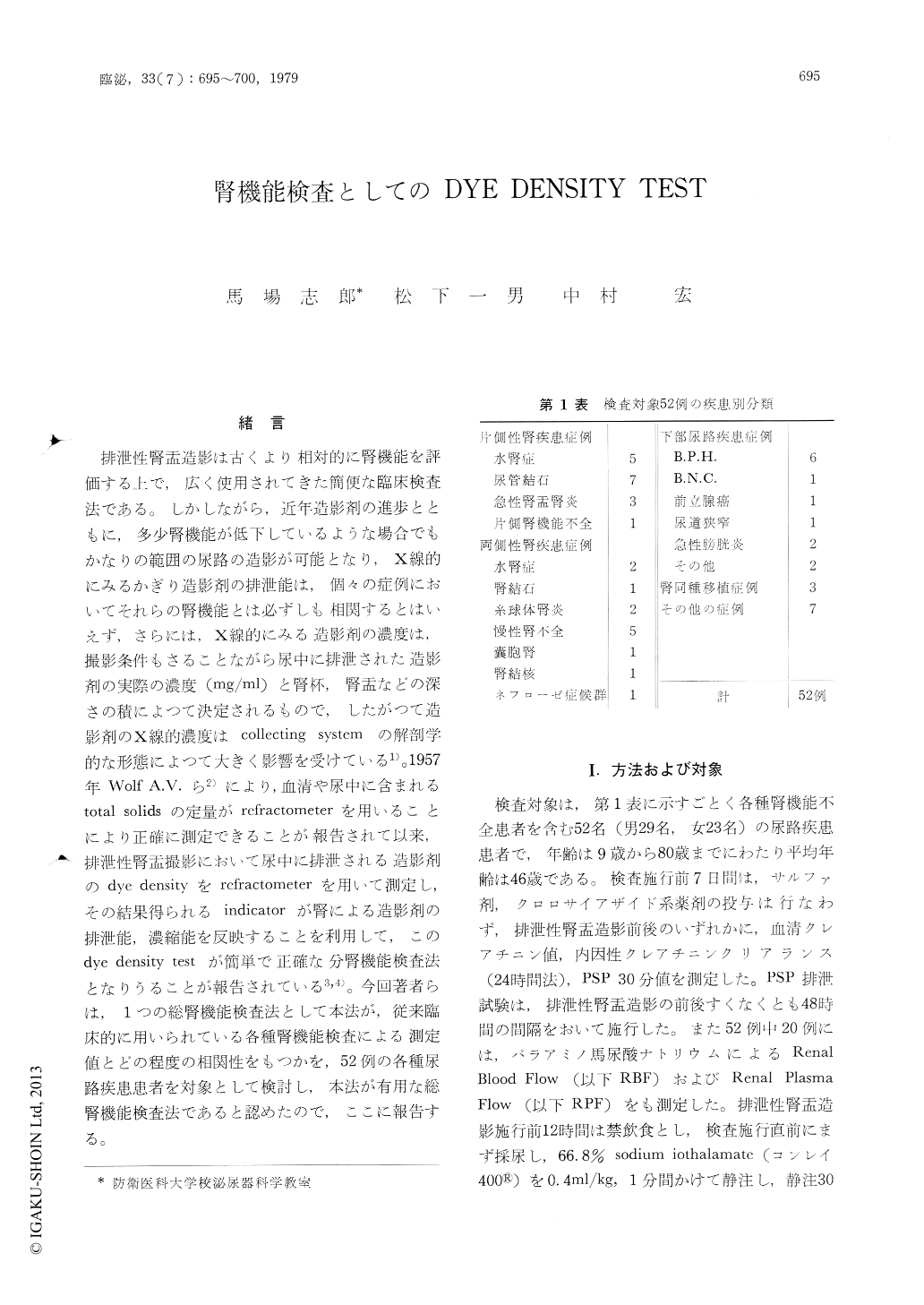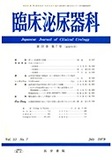Japanese
English
- 有料閲覧
- Abstract 文献概要
- 1ページ目 Look Inside
緒言
排泄性腎盂造影は古くより相対的に腎機能を評価する上で,広く使用されてきた簡便な臨床検査法である。しかしながら,近年造影剤の進歩とともに,多少腎機能が低下しているような場合でもかなりの範囲の尿路の造影が可能となり,X線的にみるかぎり造影剤の排泄能は,個々の症例においてそれらの腎機能とは必ずしも相関するとはいえず,さらには,X線的にみる造影剤の濃度は,撮影条件もさることながら尿中に排泄された造影剤の実際の濃度(mg/ml)と腎杯,腎盂などの深さの積によつて決定されるもので,したがつて造影剤のX線的濃度はcollecting systemの解剖学的な形態によつて大きく影響を受けている1)。1957年Wolf A.V.ら2)により,血清や尿中に含まれるtotal solidsの定量がrefractometerを用いることにより正確に測定できることが報告されて以来,排泄性腎盂撮影において尿中に排泄される造影剤のdye densityをrefractometerを用いて測定し,その結果得られるindicatorが腎による造影剤の排泄能,濃縮能を反映することを利用して,このdye density testが簡単で正確な分腎機能検査法となりうることが報告されている3,4)。
Excretory urogram has been used as one of the routine clinical examinations for the assessment of the urinary tract disorders. X-ray observation of dye excretion, however, does not always closely parallel to the real renal function, because it is not logical to compare dye concentrations within structures of dissimilar shape. Measurements of urine dye density have been reported to be a valuable procedure for the split renal function study.

Copyright © 1979, Igaku-Shoin Ltd. All rights reserved.


